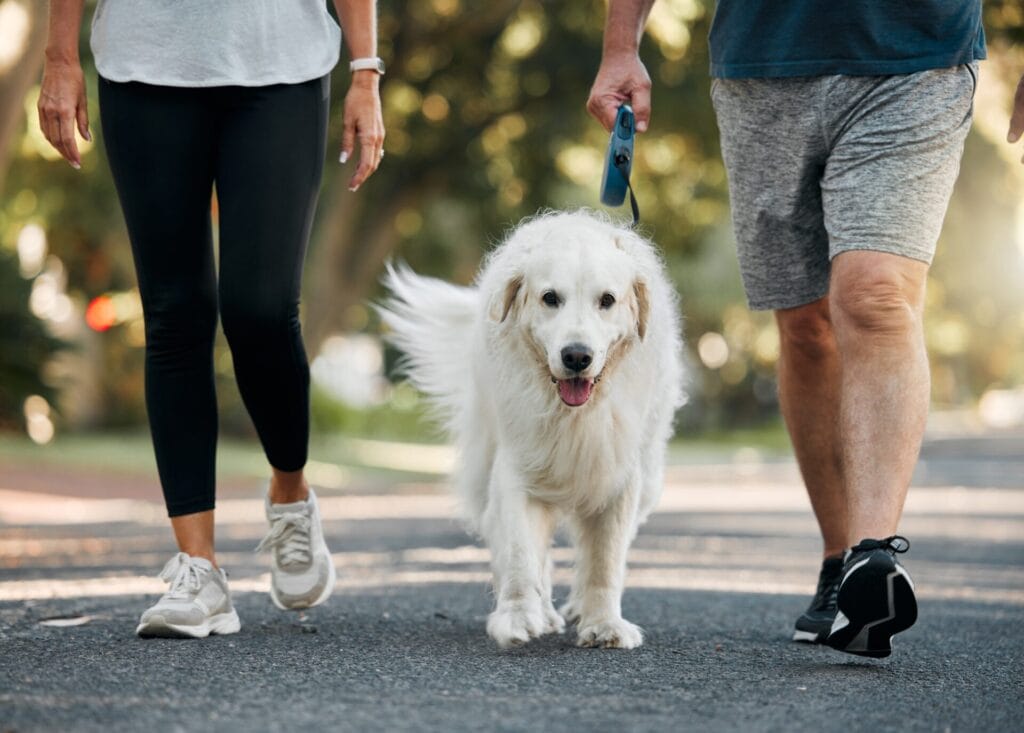You can’t teach an old dog new tricks, or so the saying goes. But we say nonsense to that! Senior dogs can remain active well into their retirement years, and it’s crucial for their cognitive and physical well-being to keep them engaged in regular activities.
In this article, we’ll explore why keeping your senior dog active is important and provide tips on how to keep them mentally and physically fit.
Why is it important to keep a senior dog active?
As dogs grow older, their energy levels decrease, but staying active has enormous health benefits, including keeping them mobile and managing their weight. Additionally, senior dogs require mental stimulation to combat cognitive decline.
Mental stimulation for older dogs
As dogs age, their cognitive abilities may decline, sometimes leading to a form of doggy dementia. To help senior dogs keep their minds sharp, try some of these activities:
Use Puzzle Toys
Brands like Kong, West Paw, and Nina Ottosson offer toys that mentally stimulate older dogs. Fill these toys with your dog’s favorite Spot & Tango food to turn mealtimes into problem-solving activities. This is one of the easiest ways to provide mental stimulation for older dogs.
Nose Work Games
Teach your dog to find your keys or their favorite toy using their nose. This game is great for older dogs as it allows them to work their brains while you simply watch in awe.
Teach New Tricks
Use reward-based methods and clicker training to teach your senior dog new tricks. Employ techniques like shaping, capturing, and targeting to keep their minds active.
Sniffaris
Take your dog on “sniffaris” (aka sniffy walks) where they can explore new scents at their own pace. This is mentally enriching and enjoyable for them.
Train Them for a Stroller
If your older dog can’t walk far, train them to go in a bag or stroller. They will still get immense pleasure from being out and about, seeing the world, and staying mentally engaged.
Exercise for senior dogs
Keeping a senior dog physically fit is essential as aging can lead to decreased mobility. Regular exercise is vital for heart and joint health and weight management, as older dogs’ metabolism slows down.
Here are our top tips for exercising your senior dog:
Go for Shorter Walks
Regular short walks are beneficial for dogs who can’t handle long walks but still enjoy being out and about.
Try Canine Conditioning
This helps with joint mobility and muscle strength. Look for a canine fitness trainer in your area to assist.
Dog Yoga (Doga)
Gentle stretching and poses, similar to human yoga, can keep your dog mentally and physically fit.
Play with Your Dog
Games like fetch, tug, flirt pole, or chase will give your dog a cardio workout and keep them fit.
Go Swimming
Swimming is excellent for senior dogs as it relieves pressure on weight-bearing joints. Use a doggy life jacket to ensure safety, even if your dog is a competent swimmer.
Keeping a senior dog active maintains their mental and physical fitness. They still want to do “stuff,” just not with the same intensity as when they were younger. Focusing on mental stimulation can help slow cognitive decline, while physical exercise should be adapted to include more strengthening workouts and lower-impact activities.
Aging dogs still love to play! Don’t forget to use food puzzle toys filled with your dog’s favorite food to keep them engaged and active.




















